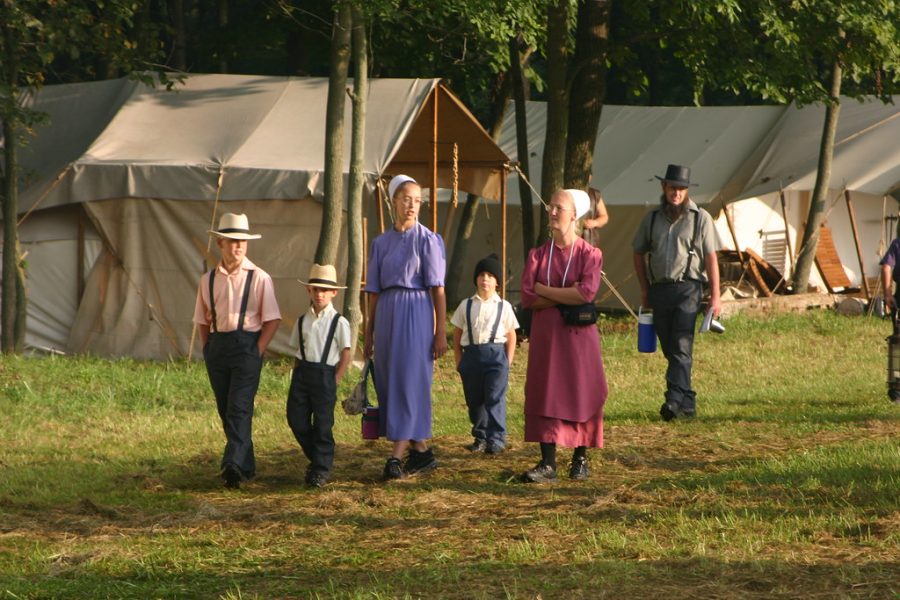What being Amish really means
Walking hand-in-hand, an Amish family heads through their community. The Amish cherish their family and spend time with one another as much as they can.
March 3, 2020
Who are the Amish? We have all heard of these people whose lifestyle we deem “old-fashioned” because they do not have cell phones and drive a horse and buggy instead of a car. When rarely seen in public, they tend to stand out with their clothing. But since they are seen rarely, they are almost an enigma to people who live outside of their seemingly hidden communities. “Every time I see them, I wonder about how they live without technology,” junior Urielle De Luna admitted about their simpler lifestyle. Not many know much about their true beliefs and way of life besides word of mouth, and there is much more to them than most people are aware of, including similarities to you and me.
Although there are over forty subgroups, almost exclusively in the United States, it comes down to two different types. Old order Amish do not own technology but are allowed to use motorized vehicles. New Order Amish are allotted far more modern technology; however, there are some universal factors of being Amish despite the differences in each community.
The largest numbers of the Amish live in Pennsylvania, Ohio, and Indiana. Their communities are rural and center around farming. In a typical family, there are seven to ten children. The boys are educated on how to farm, and the girls learn to do housework. They go to school up to eighth grade in a one-room schoolhouse, learning amish history, geography, reading, writing, and math, as well as Pennsylvania Dutch, a German dialect commonly spoken among them. After that, they are sent off to work and to marry, as well as to decide whether or not they want to stay in the community. There is a two-year period called “Rumspringa,” during which Amish teenagers experience the freedom to leave and live in the outside world, although most choose to return to their home.
They strongly value simplicity, peacefulness, and unity. They dislike people who stray from the path and closely follow the Bible. Their rules are not meant to be broken, or else one could become shunned in society. It is their shared beliefs that bring them close together, as well as their similar lives. They would never be found wearing jewelry or going to war. This is what they have always known and believed in, and the familiarity is comforting.
Although we tend to picture life without iPhones and cars as dreary and dull, the Amish do not think of themselves as missing out. Like everyone else, they find their own ways to have fun when there is no work to be done. Girls spend time together by aiding each other in cleaning or quilting in a group. Board and card games are widely played too, as well as some sports. Being nature-lovers, hiking, swimming, and sailing are more pastimes they enjoy. Their lives are not dull and serious, but enjoyable in a different way than we know it.
It feels like there is more to contrast between Amish and non-Amish people, but there are many comparisons too. They are not simply people stuck in the past, but a community of like-minded, kind, and loyal people who you might just have the chance to visit sometime.












